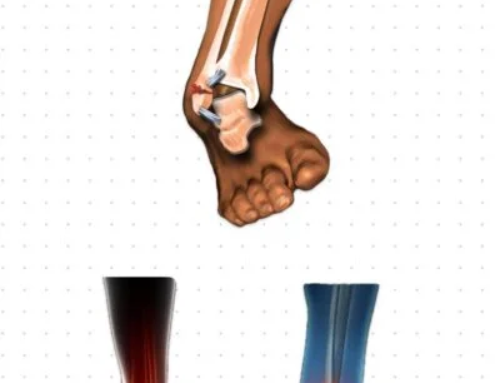Share the love
In an ever-changing world, ensuring safety and security is paramount, especially for women. Self-defence isn’t just about physical strength; it’s about awareness, preparedness, and using the resources available to protect oneself. This comprehensive guide explores how women can equip themselves with knowledge and techniques to stay safe, addressing the identification of threats, creating safe environments, understanding drug-facilitated assaults, physical assault defence strategies, and relevant legal frameworks.

Identifying a Perpetrator
Understanding and recognizing potential threats is the first step towards safety. Identifying perpetrators of women’s assault involves:
Observing Behavioural Patterns: Look for signs like over politeness but controlling behaviour. Insistence on coming alone or with a very small group. Perpetrators often exhibit patterns that can be red flags if identified early.
Gathering Evidence: Noting down instances of concerning behaviour can be crucial. This may involve keeping a record of interactions or incidents that raise suspicions.
Reporting Suspicions to Authorities: If you suspect someone is a perpetrator, it is important to report your concerns to the appropriate authorities. This can help prevent potential assaults and protect others.
Reaching Out for Support: Access to important contact numbers or hotlines for guidance and support can provide additional resources and help to ensure your safety. You should always trust your instincts – that’s the first step towards your well-being.
Creating a Safe Environment
Situational Awareness
Safety is a individual and collective effort and requires a multi-faceted approach. Significant constituents of a safe environment include:
1. Community Engagement: Education and awareness programs that foster community support networks can empower individuals and promote a culture of safety.
2. Technological Solutions: Utilizing safety apps, surveillance systems, and GPS tracking can provide real-time assistance and monitoring.
3. Policy and Legal Framework: Implementing robust policies and legal measures to protect women is crucial for long-term safety.
4. Educational Institutions: Schools and universities should have safe campus initiatives and awareness programs that address consent, respect, and bystander intervention.
5. Public Awareness Campaigns: Promoting safety through media and community outreach can help raise awareness and educate the public.
6. Self-Defense Training: Self-defense training empowers women with the skills to protect themselves confidently in adverse situations.

Drug-Facilitated Assault
Drug-facilitated assault (DFSA) involves using drugs to incapacitate victims, making them unable to consent or resist sexual activity. Understanding and recognizing DFSA is crucial:
Common Substances in DFSA:
1. Alcohol: The most frequently used substance in DFSA cases.
2. Prescription Medications: Sedatives, tranquilizers, and hypnotics like benzodiazepines (e.g., Rohypnol).
3. Illicit Drugs: GHB and ketamine are commonly used to incapacitate victims.
4. Over-the-Counter Drugs: Antihistamines and sleep aids can also be misused.
Never leave your food or drink unattended; in a new group of friends/ alien environment. Incase, it happens, don’t consume it.
Recognizing DFSA involves being aware of symptoms such as:
1. Sudden drowsiness after consuming a small amount of alcohol or an unknown drink.
2. Memory loss (blackout) of events.
3. Nausea, dizziness, confusion, and impaired coordination.
4. Uncharacteristic behaviour or finding oneself in an unfamiliar location.
Immediate Steps if DFSA is Suspected:
1. Seek Safety: Move to a secure location and contact a trusted friend or family member.
2. Avoid Showering or Changing Clothes: To preserve physical evidence.
3. Seek Medical Attention: Immediate medical help is crucial for health and evidence collection.
4. Report the Assault: Contact law enforcement promptly.
Prevention and Awareness:
1.Be cautious with drinks, keep an eye on your drink, do not accept drinks from strangers, and use drink covers or test kits if available.
2.Stay with trusted friends and use the buddy system to ensure safety in social settings.
3.Support public awareness campaigns to educate others about DFSA.
4.Know the signs of being drugged and educate yourself and others.

Support for Victims:
1. Counselling and Therapy: Access mental health services to cope with the trauma.
2. Legal Assistance: Seek legal advice to understand your rights and options.
3. Community Resources: Utilize sexual assault hotlines, support groups, and other community resources.
For support and guidance reach out to our Clinical PsychologistCapt. Purba

Physical Assault
Understanding the types of physical assaults is key to preparedness:
- Unarmed Assault: Involves the use of body parts like fists and feet.
- Armed Assault: Involves weapons such as knives or guns.
- Group Assault: Involves multiple perpetrators targeting one or more victims.
Self-Defense Techniques are essential for protecting oneself:

Basic Moves:
Palm Strike: Strike the attacker’s nose or chin with the heel of your palm.
Elbow Strike: Use your elbow to strike the attacker’s face, neck, or chest.
Knee Strike: Drive your knee into the attacker’s groin or midsection.
Eye Gouge: Jab your fingers into the attacker’s eyes.
Stomp: Stomp on the attacker’s foot or shin.
Learn the move from our self defense expert Dr. Alankrita (Black Belt in Karate)
Escape Techniques:
Wrist Release: Twist your wrist against the attacker’s thumb to break free.
Bear Hug Escape: Drop your weight and use your elbows to strike the attacker’s ribs.
Hair Grab Defense: Secure the attacker’s hand and strike their face or groin.
Flight Response (Escape) involves:
Maintaining situational awareness by staying alert, planning your route, and avoiding distractions.
Using your voice to yell for help or deter the attacker.
Creating distance and running to safety.
Emergency Response:
Immediate Actions: Call for help by dialing emergency services and using a personal alarm to attract attention.
Medical Attention: Seek medical help and preserve evidence.
Reporting the Assault: Contact authorities and provide detailed information. Reach out to victim support services for further assistance.
Training and Preparedness
Self-Defense Classes are essential for practical knowledge and confidence. Enroll in classes that teach effective techniques and strategies for various situations.
Mental Preparedness involves staying calm and trusting your instincts. Mental resilience and preparedness can make a significant difference in critical situations.
Legal Frameworks
Understanding legal protections is crucial for empowerment:
IPC Sections Related to Violence Against Women:
Section 354 of the law addresses the offense of assaulting or using criminal force against a woman with the intention to outrage her modesty.
Section 354A: Sexual harassment.
Section 354B of the law pertains to the act of assaulting or using criminal force against a woman with the intention of disrobing her.
Section 354C: Voyeurism.
Section 354D: Stalking.
Section 376: Rape.
Section 509 of the law pertains to any word, gesture, or act that is specifically intended to offend or demean the modesty of a woman.
Legalities Behind Arresting a Woman involve:
Presence of a female police officer during the arrest.
Specific procedures for informing the grounds of arrest, medical examination, and ensuring rights to contact relatives and legal representation.
Key Legal References:
Criminal Procedure Code (CrPC):
Section 46: How arrests should be made.
Section 50: Informing the person about the grounds of arrest and right to bail.
Section 51: Search of arrested persons.
Sections 56 and 57: Producing the arrested person before a magistrate.
Section 54: Medical examination of the arrested person.




